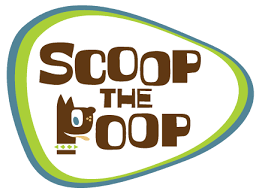
Picking up pet waste and disposing of it in the trash keeps our sidewalks clean and our neighbors happy. But it also protects water quality, keeping our water resources safe for you, your family and your pets.
Did you know?
72.8 million dogs currently live in the United States. 30,000 tons of waste is collectively produced every day. That’s 10 million tons of dog waste produced every year. That’s a lot of poop, but what exactly is it doing to our environment?
Why is poop a problem?
Here in Jacksonville, we love our pets. However, their waste is not suitable for compost or fertilizer. It can carry diseases and bacteria, which are unsafe for humans. When it rains, bacteria from pet waste can wash directly into storm drains and drainage ditches and eventually into our tributaries and the St Johns River - untreated.
Animal waste contains nutrients that encourage excess weed and algae blooms like we see in the St Johns River and other waterways. When pet waste is washed into those waterways, it decays using up oxygen and sometimes releasing ammonia. Low oxygen levels and increased ammonia combined with warm temperatures can kill fish and other aquatic life.
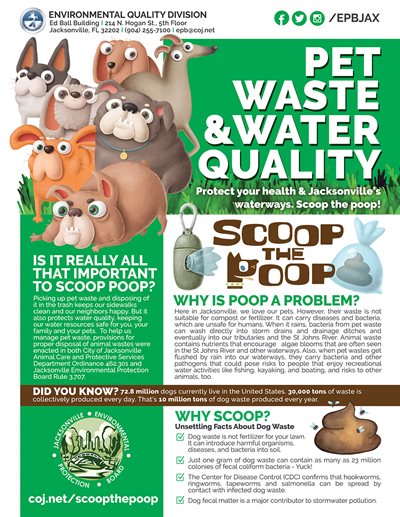 Why Scoop?
Why Scoop?
6 Unsettling Facts About Dog Waste
-
Dog waste is not fertilizer for your lawn. In its raw form, it can actually be toxic to your soil. Dog waste needs to first be safely composted in an enclosed system before being considered a beneficial aid to the environment.
-
Just one gram of dog waste can contain as many as 23 million Fecal Coliform bacteria. Waste can seep into groundwater and spread salmonella and giardia. This poses a hazard to your pets, your family and your landscape.
-
Your lawn mower doesn't help, in fact it can make it worse. Mowers can actually chop up the waste into smaller pieces and spread it further throughout your yard where you, your children and your pets continue to step in it and then bring it into your home.
-
Dog fecal matter is a major contributor to stormwater pollution. One out of three households have at least one dog, and all that dog poop left out can be blown into storm drains which lead to our waterways. Whn in water, the liquified waste consumes the oxygen and releases ammonia which contaminates our water resources and contibutes to algal blooms. This makes it harmful to fish and other aquatic life, and potentially to humans as well.
-
If you don't pick it up, it piles up...fast. The average dog discards approximately three quarters of a pound of waste per day, which adds up to 275 pounds per year. Your yard may be more polluted than you think!
-
The Centers for Disease Control (CDC) confirms that hookworms, ringworms, tapeworms and Salmonella can be spread by contact with infected dog waste. It can take over a year for dog waste to decay, but even when it has visibly disappeared, the parasite eggs it contained can linger on for years in your soil - leaving your family and your pets vulnerable to serious infection.
Download the Scoop the Poop flyer here.
What can you do about dog poo?
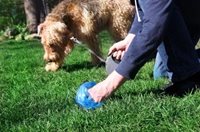 |
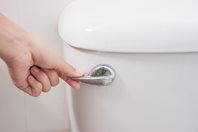 |
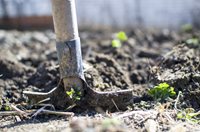 |
Bag It!
Pick up dog waste using a plastic bag
and deposit it into a trash can.
Reuse plastic shopping bags or purchase
biodegradable bags at a pet store.
|
Flush It!
Pick up dog waste,
deposit it into the toilet and flush it away.
DO NOT flush bags!!
|
Bury It!
Pick up dog waste, dig a hole about 6 inches deep,
place waste into the hole and cover.
Be sure to do this well away
from gardens growing edible plants.
|
Remember - When your pet goes on the lawn, it doesn't just go on the lawn!